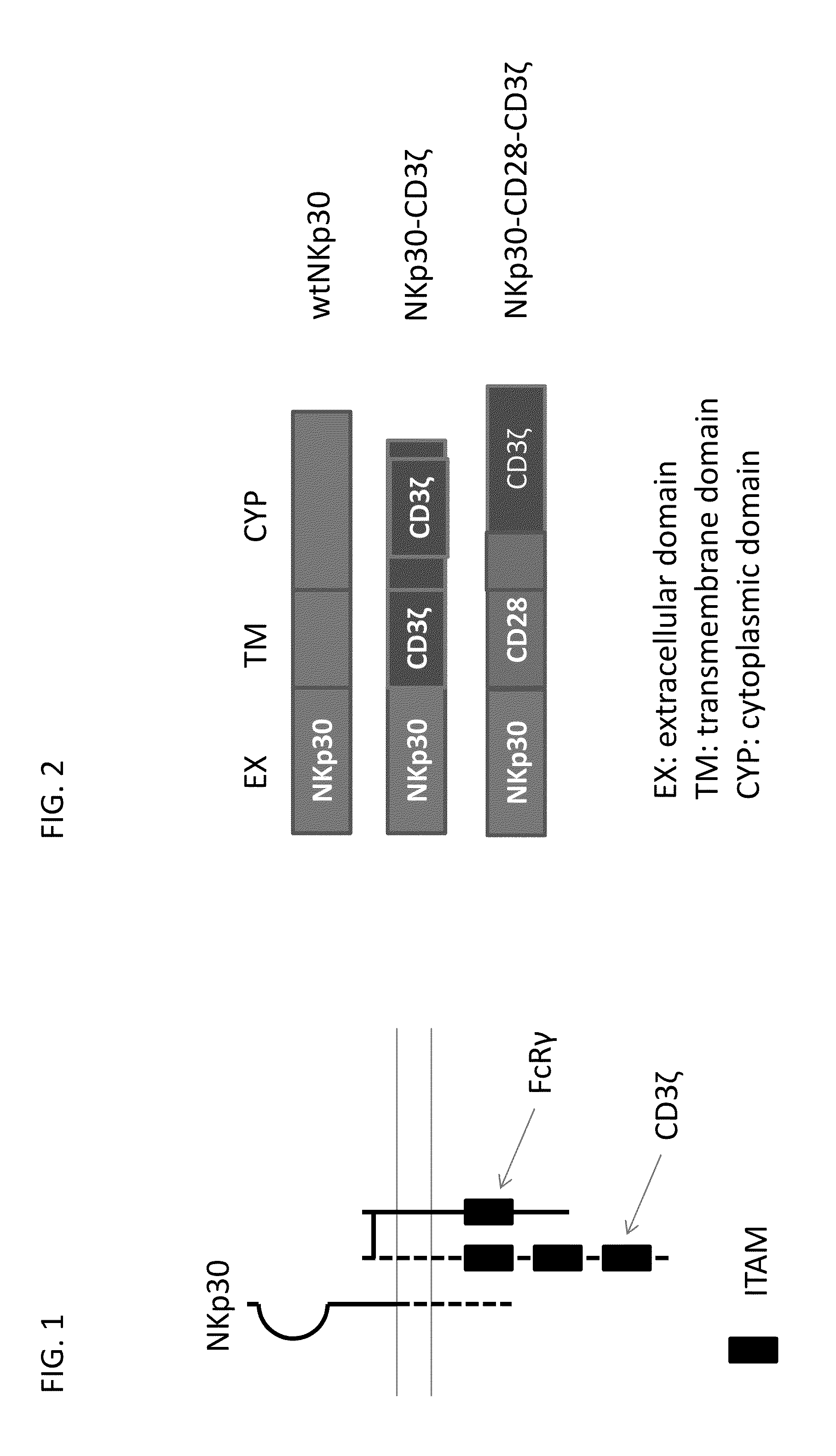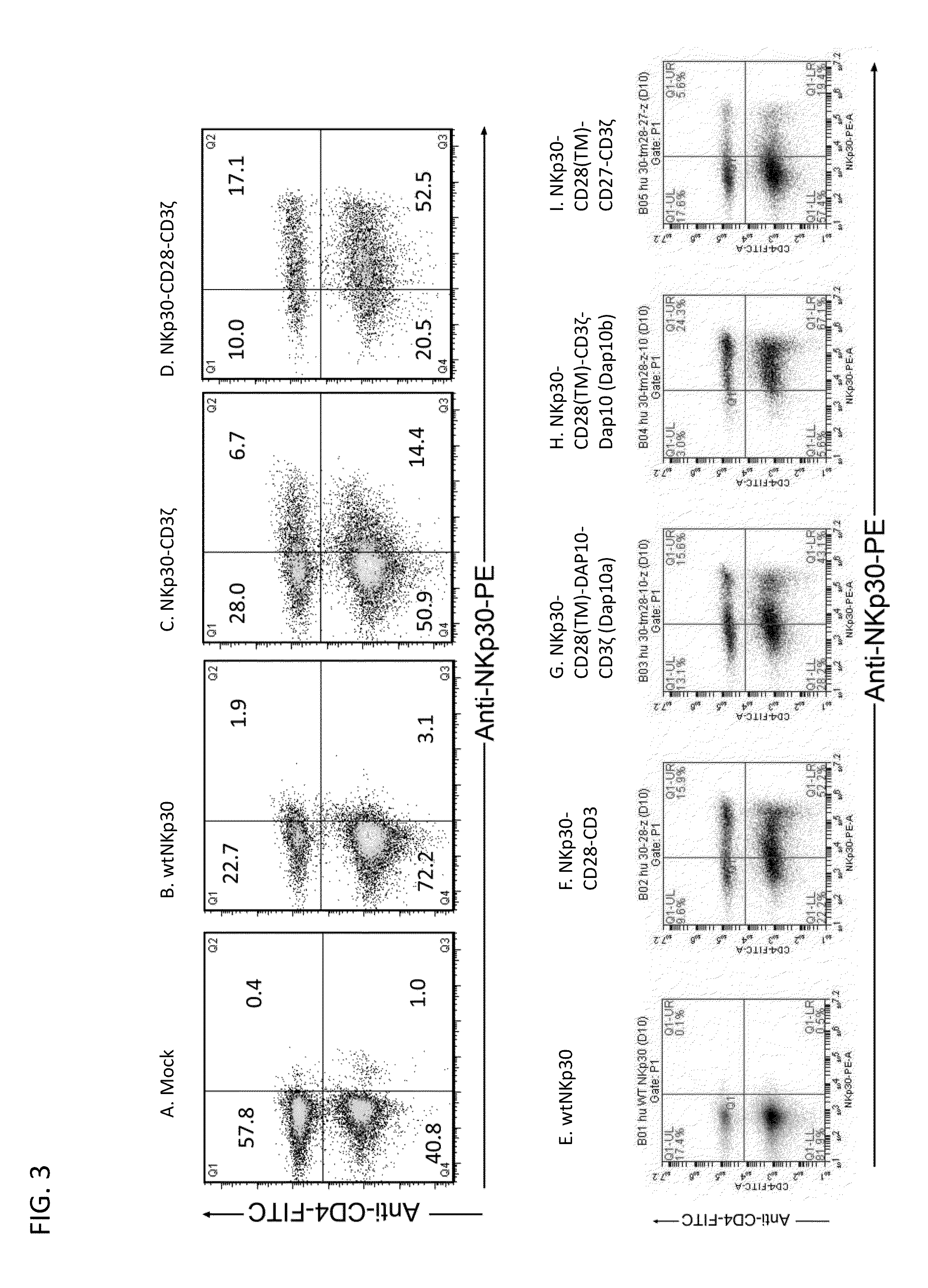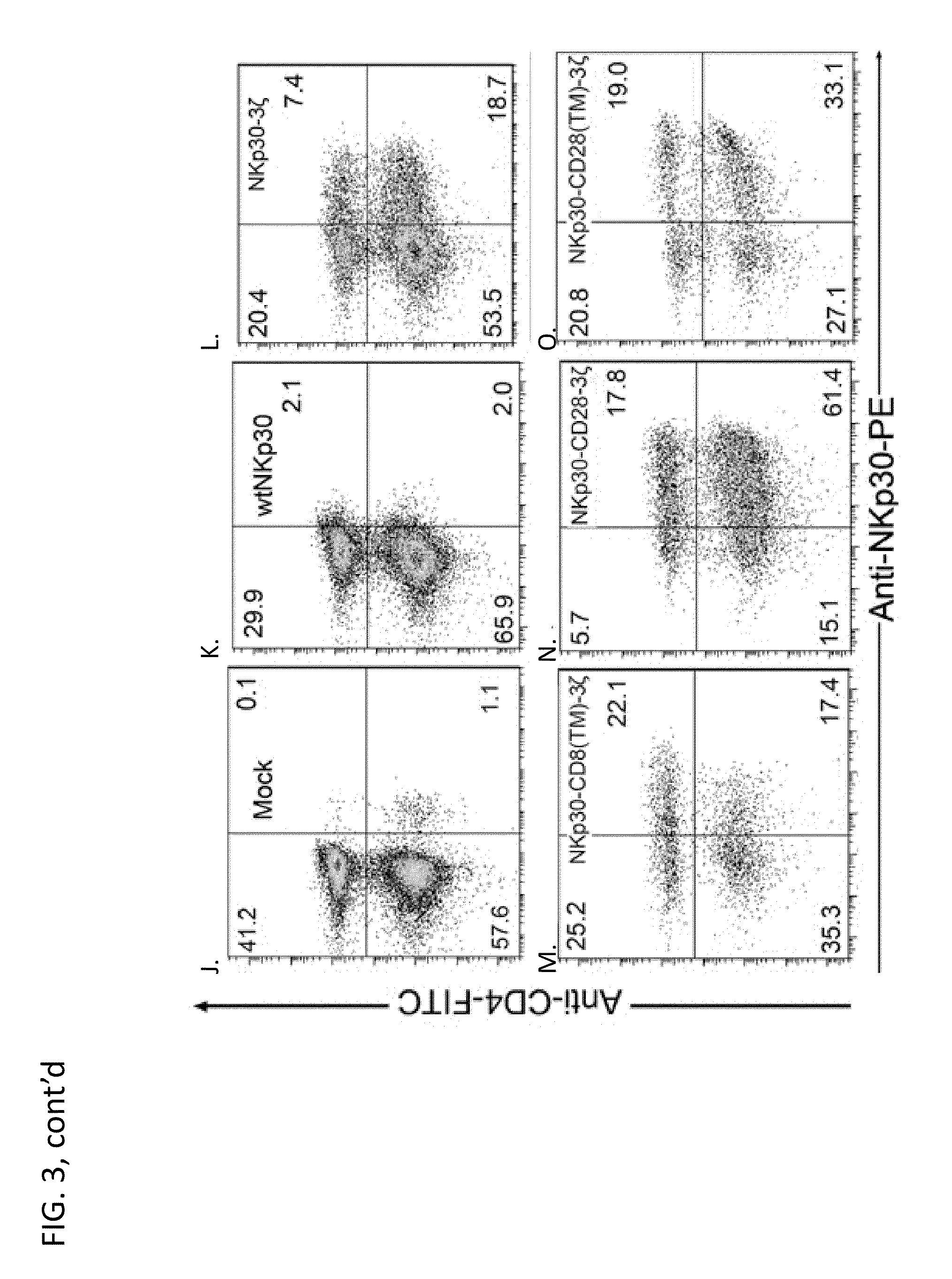Nkp30 receptor targeted therapeutics
- Summary
- Abstract
- Description
- Claims
- Application Information
AI Technical Summary
Benefits of technology
Problems solved by technology
Method used
Image
Examples
example 1
Production of Chimeric NKp30 Human T Cells
[0245]Natural killer (NK) cells can attack tumor cells, which are recognized utilizing a combination of signals from activating and inhibitory receptors including NKp30. FIG. 1 provides an graphical overview proteins involved in NKp30 signaling, which include FcRγ and CD3ζ, each of which contain immunoreceptor tyrosine-based activation motif (ITAM) which are involved in the activation of cellular responses via immune receptors.
[0246]In an effort to develop a new mechanism for T cells to attack tumor cells and induce host anti-tumor immunity, we genetically modified primary human T cells with chimeric NKp30 receptor containing the (cytoplasmic) CD3ζ and / or CD28 chain signaling domains. Our hypothesis was that the chimeric NKp30-modified T cells would react to NKp30 ligand-positive tumor cells and become fully activated resulting in elimination of the tumor and induction of host anti-tumor immunity. The chimeric NKp30 constructs used in this s...
example 2
Chimeric NKp30 Human T Cells Specifically Respond to Tumor Cells Expressing NKp30 Ligands
[0248]This example demonstrates that the NKp30 chimeric T cells described in Example 1 were specifically activated by cells expressing NKp30 ligands.
[0249]A panel of human tumor cell lines as well as human PBMCs were screened for the expression of NKp30 ligands on mRNA level by RT-PCR (FIG. 4) using primers specific for the NKp30 ligands BAT3 and B7-H6, as well as a housekeeping gene (GAPDH) as a positive control. All tested human tumor cells had detectable amounts of BAT3 mRNA, whereas B7-H6 expression was readily detected in HeLa, U937, Panc-1, T47D, RPMI8226, K562, and A375 cells, but but expression was at lower levels or undetectable in MCF-7, DU145, IM9, U266 and human PBMCs.
[0250]Surface expression of NKp30 ligands was then determined using a soluble human NKp30-mIgG2a fusion protein, which labels cells that surface-express NKp30 ligands (such as B7-H6). As shown in FIG. 5, K562, A375 and ...
example 3
Production of Chimeric NKp30 Mouse T Cells
[0256]This example demonstrates that human NKp30 receptors (both wild-type and chimeric) can express on primary mouse T cells. Because NKp30 is a pseudogene in inbred mice, we determined whether chimeric human NKp30 receptors could be expressed on mouse T cells, which allows the testing of in vivo efficacy of chimeric NKp30-modified T cells against NKp30 ligand-positive tumor cells in immunocompetent mouse models. One day after ConA (1 ug / ml) stimulation, mouse spleen cells were transduced with retroviral supernatants containing NKp30 or control viruses. After expansion and G418 selection, mouse T cells were stained with anti-CD4 FITC and anti-NKp30-PE (FIG. 9). Similar to the expression profile observed on human T cells, chimeric NKp30 receptors were expressed on mouse T cells, although the expression of NKp30 observed was slightly lower than with human T cells.
[0257]As expected, mock-transfected cells had low levels of NKp30 signaling (FIG...
PUM
| Property | Measurement | Unit |
|---|---|---|
| Fraction | aaaaa | aaaaa |
| Fraction | aaaaa | aaaaa |
| Fraction | aaaaa | aaaaa |
Abstract
Description
Claims
Application Information
 Login to View More
Login to View More - R&D
- Intellectual Property
- Life Sciences
- Materials
- Tech Scout
- Unparalleled Data Quality
- Higher Quality Content
- 60% Fewer Hallucinations
Browse by: Latest US Patents, China's latest patents, Technical Efficacy Thesaurus, Application Domain, Technology Topic, Popular Technical Reports.
© 2025 PatSnap. All rights reserved.Legal|Privacy policy|Modern Slavery Act Transparency Statement|Sitemap|About US| Contact US: help@patsnap.com



